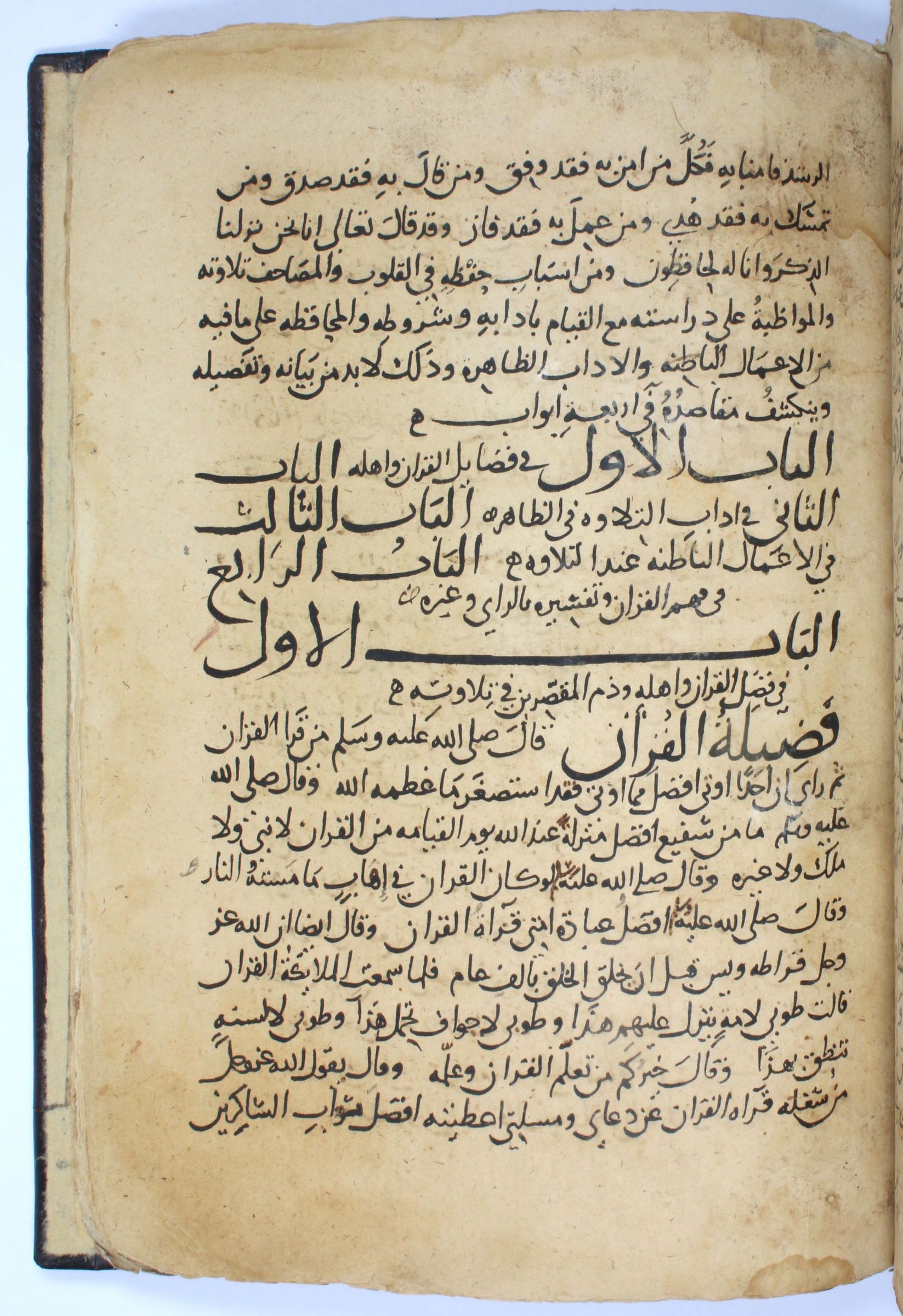Very early copy of al-Ghazali's most famous work
Ihya Ulum al-Din [The Revival of Religious Sciences].
Folio (214 x 288 mm). Arabic manuscript on paper. 66 ff. First leaf is a title-page added by a later hand. 21 lines of bold black naskh script with occasional underlining and notations in red. 19th century leather-backed marbled boards.
€ 75,000.00
A precious and early manuscript of the third volume of al-Ghazali's personal magnum opus and what is considered the greatest work of the Islamic Golden Age, "The Revival of Religious Sciences", copied within a century of its author's death. Muhammed ibn Muhammed at-Tusi al-Ghazali (1058-1111) was one of the greatest figures of the Golden Age; he gained fame for his legal theories, philosophy, and works on logic, but it was this particular work for which he was most respected. Al-Ghazali has been called the single most influential Muslim after the prophet Muhammad, and a "Mujaddid", or Renewer of the Faith. His works were so highly acclaimed by his contemporaries that he was awarded the honorific title "Proof of Islam" ("Hujjat al-Islam").
Famously born from a spiritual crisis experienced after his appointment to a prestigious intellectual position as head of the Nizzamiyya University in Baghdad, "Revival of Religious Sciences" was and remains a hugely influential theological text throughout the medieval period. Its themes include ascetism and morals within the structure of Muslim law and Sufism. Indeed, in addressing these themes, al-Ghazali succeeded in synthesizing his ideas into what became a classic introduction to the way Islamic concepts and practices might form the foundation of reflective religious life.
The first leaf (containing only the title of the work) is a later addition; light edgewear and standard gentle browning to leaves. Quite a well preserved and very early copy.
GAL I, 422, no. 25.












